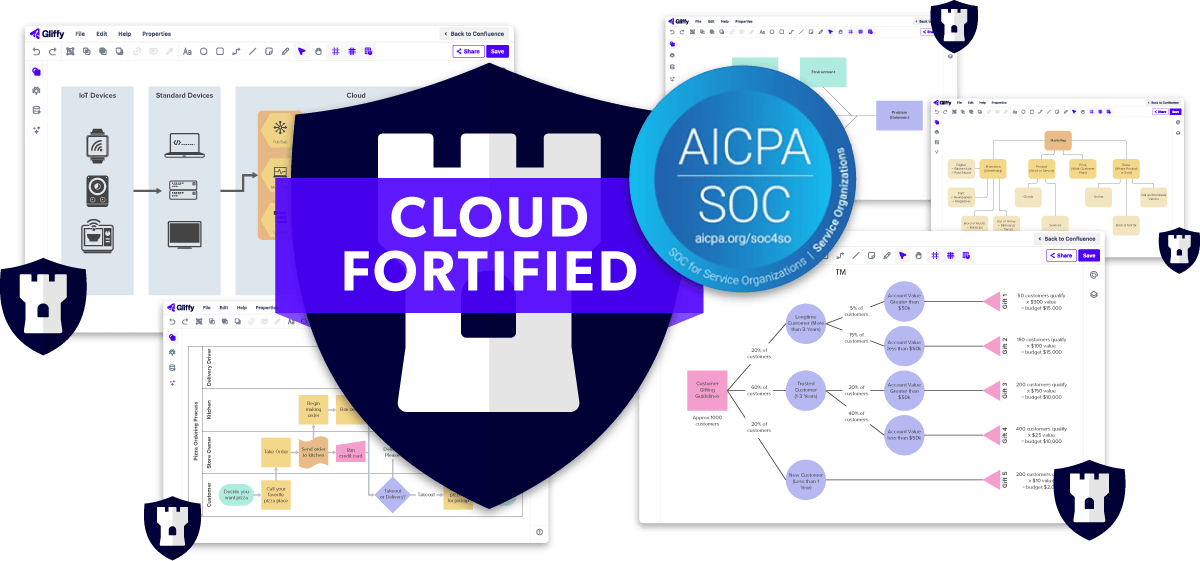
Powered by Perforce
Gliffy is owned by Perforce, a longstanding and trusted name in the software industry. Perforce is committed to ensuring data security for customers across all its product offerings, including Gliffy, so you can rest assured that the information contained within your diagrams is safe and secure.
To learn more about Perforce’s data security standards and practices, visit the official Perforce site:

Cloud Fortified & SOC 2 Compliant
Gliffy was one of the first apps to achieve Atlassian’s Cloud Fortified designation when the program was introduced in July 2021. Our Cloud apps have also received SOC 2 Type II certification.
These credentials demonstrate our ability to meet enterprise-level standards for reliability, support, and security (including control implementation and validation, risk assessment, testing, and more).

Led by CISO Aaron Kiemele
As the guide for the ongoing maturation of the information security program, Aaron Kiemele is the Chief Information Security Officer (CISO) at Perforce Software. With a technical foundation, Aaron approaches managing an information security program through a foundation of practical, actionable approaches to protecting the confidentiality, integrity, and availability of systems, networks, services, and data.
Aaron’s experience ranges from network engineering to executive leadership roles — including CTO and CISO — with highly regulated industries, which includes healthcare, government, defense, and payment/finance.
With a “Secure by Design and Compliant by Default” approach, Aaron and his team guides the diverse Perforce product lines through their compliance and regulatory obligations. This work is performed with the help of designated liaisons each time, acting as subject matter experts and points of contact to provide tactical support.
Gliffy for Security-Focused Teams
While all Gliffy's Atlassian apps are secure and supported, we offer Gliffy Diagrams | Zero Egress & Isolated Cloud-Ready as a Cloud option specifically for teams working in regulated industries. Gliffy Zero Egress ensures no diagram data ever leaves your Atlassian environment and maintains ITAR, GDPR, HIPAA, and SOC 2 compliance.
Gliffy Online
Hosted Security
Gliffy Online servers and customer data are hosted on Amazon Web Services (AWS). Information about AWS Security can be found on the official AWS site.
Backups & Reliability
AWS services are used for daily backups. All our systems are fully redundant and clustered, and Disaster Recovery testing is periodically performed to ensure operations are restored in a timely manner.
Payment Information
All payments made for Gliffy Online use Stripe (PCI Certified). For additional information, please visit Stripe’s privacy page. No credit card data or payment related information is stored on Gliffy systems.